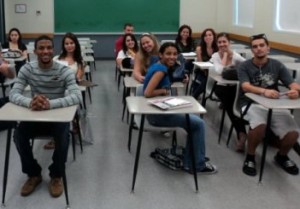Education
How do I Reach out to my Troubled Student?
Guest Blogger: Darcy Fonner
Teaching is a rewarding profession that enables a person to share their knowledge with others while helping them to reach their fullest potential. However, it can be challenging to watch a student struggle with learning the material. Because every teacher wants each student in their class to succeed, it is important to understand that some students may require a different approach in order to help them to grasp an important concept. When a teacher begins to notice that a student is beginning to experience low grades on assignments and tests, then it may be time to reach out to the student in order to ensure that they receive the help that they need to succeed.
Assess Their Needs
One of the first things that an educator can do to help a troubled student is to assess their needs. There are many reasons why a student may begin to struggle in a class. Learning disabilities are a common cause of a student having problems grasping information. Additionally, a student may not have the foundation skills that are necessary for completing assignments. This is especially common in math and writing courses. In these cases, it can be helpful to make sure that they learn the basic skills that they are missing so that they can build upon them to do better in class.
Refer to Tutoring Services
When a student needs extra help, there are several things that an educator can do to make sure that they receive the support that they need. First, a teacher can offer tutoring after class for specific students. When there is not enough time to completely meet a student’s needs, then it is also possible to refer them to a tutoring service. Many schools offer tutoring services for free or at a low cost that most students can afford. Additionally, there are many online resources for students who need some extra tutoring.
Consider Peer Projects
Many times, a troubled student will thrive in a group environment. Some students struggle with test taking, but they can do well on a group project or presentation. When pairing students, it is important to include a mixture of skill levels in each group. This way, the students can learn from each other throughout the project. Pairing a troubled student with someone who is strong in their area of weakness will help to bring up the troubled student’s skill level.
Reaching out to a troubled student should always be approached with understanding and care. By taking the time to discover a student’s needs and implementing steps to ensure that they are met, an educator can be certain that they are offering the right support for each student in their classroom.
About the Author
Darcy Fonner is using her masters in school counseling programs to help with her professional career. When not working, she enjoys blogging on education subjects and working with troubled children.



